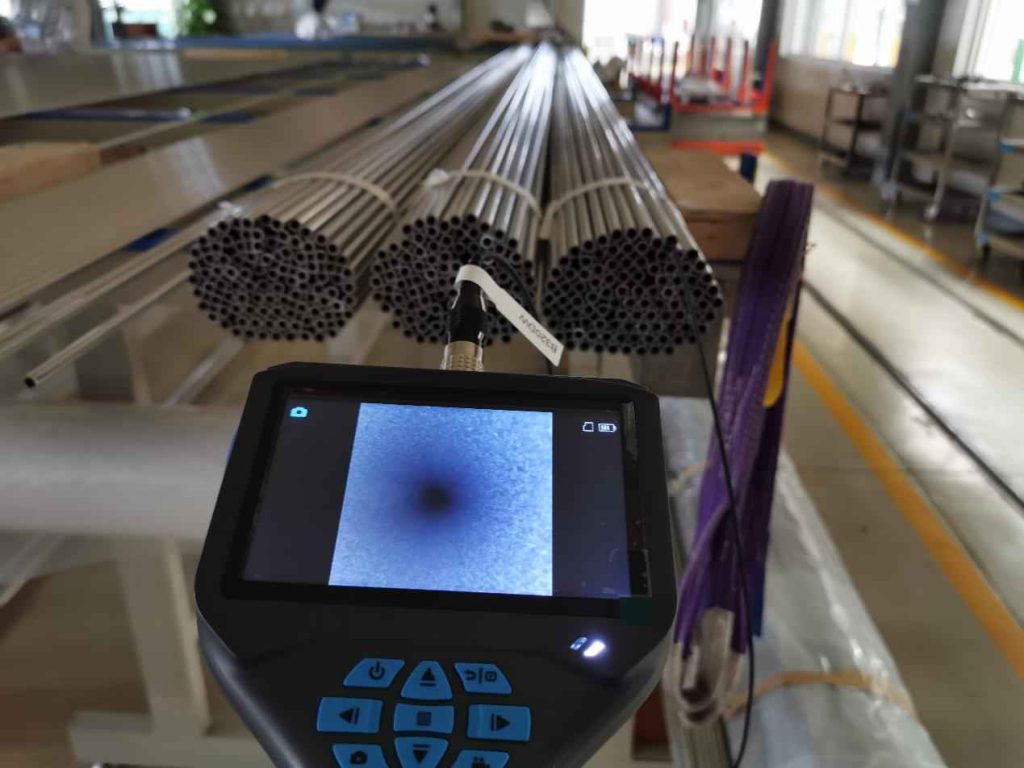
(1) Quality requirements
①Chemical composition of steel: The chemical composition of steel is one of the most important factors affecting the performance of seamless steel pipes, and it is also the main basis for formulating process parameters for rolling and heat treatment of steel pipes.
1.Alloying elements: intentionally added, according to application;
2.Residual elements: brought into steelmaking, properly controlled;
Hazardous elements: strictly controlled (As, Sn, Sb, Bi, Pb), gases (N, H, O);
Out-of-furnace refining or electroslag remelting: improve the uniformity of the chemical composition in the steel and the purity of the steel, reduce the non-metallic inclusions in the billet and improve their distribution.
②The geometrical dimensional accuracy and shape of the steel pipe
1.The accuracy of the outer diameter of the steel pipe: depends on the method of determining (reducing) the diameter, the operation of the equipment, the process system, etc.
2.Allowable deviation of outer diameter δ=(D-Di)/Di ×100% D: maximum or minimum outer diameter mm
Di: Nominal outer diameter mm
1) Steel tube wall thickness accuracy: related to the heating quality of the tube blank, the process design parameters and adjustment parameters of each deformation process, the quality of tools and their lubrication quality, etc.
2) Wall thickness tolerance: ρ=(S-Si)/Si×100% S: The maximum or minimum wall thickness on the cross section
Si: nominal wall thickness mm
1) Steel pipe ovality: It indicates the degree of out-of-roundness of the steel pipe.
2) Steel pipe length: normal length, fixed (multiple) ruler length, length tolerance
1.Steel tube bending degree: Indicates the bending degree of the steel pipe: the bending degree of the steel pipe length per meter, the bending degree of the whole length of the steel pipe
2.The inclination of the end face of the steel pipe: indicates the inclination of the end face of the steel pipe and the cross section of the steel pipe
3.Bevel angle and blunt edge of steel pipe end face
4.Surface quality of steel pipe: requirements for surface smoothness
5.Dangerous defects: cracks, inward folds, outward folds, rolling, delamination, scarring, concave pulls, convex hulls, etc.
6.General defects: pits, blue lines, scratches, bumps, slight inner and outer straights, roll marks, etc.
cause:
① Due to surface defects or internal defects of the tube blank.
② In the production process, such as incorrect design of rolling process parameters, unsmooth die surface, poor lubrication conditions, and unreasonable pass design and adjustment.
③ In the process of heating, rolling, heat treatment and straightening of the billet (steel pipe), if excessive residual stress is generated due to improper heating temperature control, uneven deformation, unreasonable heating and cooling speed or too much straightening deformation, then It may also cause surface cracks in the steel pipe
7.Steel management properties: normal temperature mechanical properties, high temperature mechanical properties, low temperature properties, corrosion resistance. The physical and chemical properties of the steel pipe mainly depend on the chemical composition of the steel, the structure of the steel, the purity of the steel, and the heat treatment method of the steel pipe.
8.Steel pipe process performance: flattening, flaring, crimping, bending, welding, etc.
9.Metallographic structure of steel pipe: low magnification (macro), high magnification (micro) M, B, P, F, A, S
10.Special requirements for steel pipes: contract attachments, technical agreements.
(2) Quality inspection method of seamless steel pipe:
1.Chemical composition analysis:Chemical analysis, instrumental analysis (infrared C-S instrument, direct reading spectrometer, zcP, etc.).
①Infrared C-S instrument: analyze ferroalloys, steelmaking raw materials, C and S elements in steel.
②Direct reading spectrometer: C, Si, Mn, P, S, Cr, Mo, Ni, Cn, A1, W, V, Ti, B, Nb, As, Sn, Sb, Pb, Bi in bulk samples
③N-0 instrument: gas content analysis N, O
2.Steel pipe geometry and shape inspection:
① Steel pipe wall thickness inspection: micrometer, ultrasonic thickness gauge, no less than 8 points at both ends and record.
②Check the outer diameter and ovality of the steel pipe: caliper, vernier caliper, ring gauge, and measure the maximum and minimum points
③ Steel pipe length inspection: steel tape measure, manual, automatic length measurement.
④Steel tube bending degree inspection: straightedge, level (1m), feeler gauge, thin wire to measure the bending degree of each meter and the bending degree of the whole length.
⑤ Inspection of the bevel angle and blunt edge of the end face of the steel pipe: square ruler, card board.
3.Steel pipe surface quality inspection: 100%
① Manual visual inspection: lighting conditions, standards, experience, signs, steel pipe rotation.
②Non-destructive inspection:
1) Ultrasonic flaw detection UT:It is more sensitive to the surface and internal crack defects of various materials with uniform materials.
2) Eddy current testing ET: (electromagnetic induction)
3) Magnetic particle MT and magnetic flux leakage inspection:Magnetic flaw detection, suitable for the detection of surface and near-surface defects of ferromagnetic materials.
4) Electromagnetic ultrasonic flaw detection:No coupling medium is required, and it can be applied to high temperature, high speed, and rough surface flaw detection of steel pipes.
5) Penetrant testing:Fluorescence, coloration, and detection of surface defects of steel pipes.
4.Steel management performance inspection:
①Tensile test: measure stress and deformation, determine the strength (YS, TS) and plasticity index (A, Z) of the material
②Impact test: CVN, notch C type, V type, work J value J/cm2
③Hardness test: Brinell hardness HB, Rockwell hardness HRC, Vickers hardness HV, etc.
④Hydraulic test: test pressure, voltage stabilization time, p=2Sδ/D
5.Steel pipe technical performance inspection process:
① Flattening test: round sample C-shaped sample (S/D>0.15) H=(1+2)S/(∝+S/D)
②Ring pull test: L=15mm, no crack is qualified
③Flaring and hemming test: the taper of the top center is 30°, 40°, 60°
④Bending test: can replace flattening test (for large diameter pipe)
6.Metallographic analysis of steel pipe:
①High magnification inspection (microscopic analysis): non-metallic inclusions 100x GB/T 10561 Grain size: grade, grade difference
②Low magnification test (macro analysis): the naked eye and magnifying glass are less than 10x.